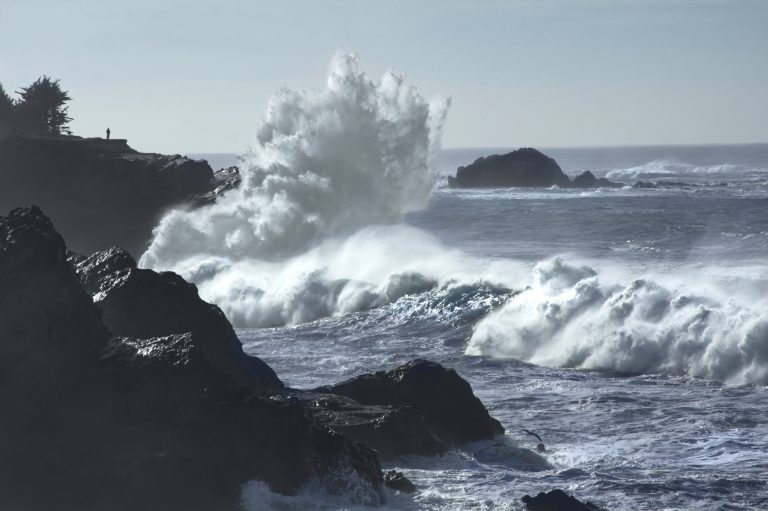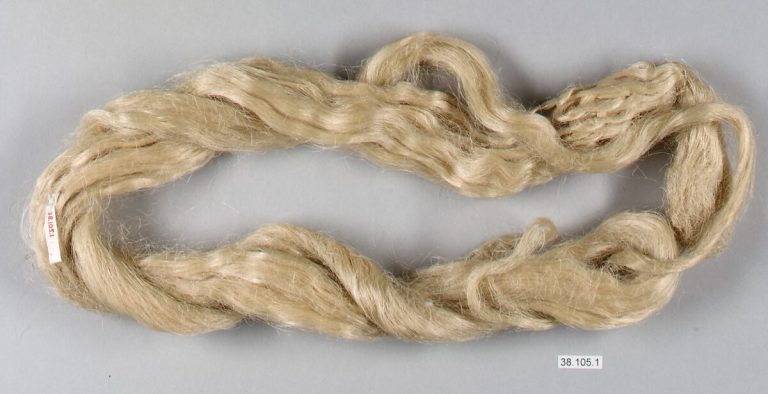An uncharacteristically large volume of hot, mineral-rich seawater is boiling up from the boundary of the Cascadia Subduction Zone, at a location around 50 miles off the coast from Newport, Oregon.
The plume rising up from the “seep site,” discovered in 2014, could hold important clues as to the behavior of the Cascadia fault, which is responsible for the massive earthquakes that strike the Pacific Northwest every several hundred years.
Evan Solomon, an associate professor of oceanography at University of Washington, sat down with Oregon Public Broadcasting (OPB) host David Miller on the Think Out Loud program late this April to discuss the matter.
The seep site is one of around 340 such areas along the subduction zone, and was discovered by then-UW undergraduate student Brendan Phillip during a routine hydrographic survey, Solomon said as he introduced the site. Phillip then undertook a follow-up investigation in 2015 using a remote-controlled submersible.
Phillip, by then a graduate student, and his team described the torrents of boiling water pushing up from within the fault line, with Solomon likening it to a “fire hose … coming out of the sea floor.”
Success
You are now signed up for our newsletter
Success
Check your email to complete sign up
“Usually the flux of water from these sites isn’t very high,” Solomon said.
He added that the water from Phillip’s seep site, which he named Pythias Oasis, was moving at a rate “90 million times faster than what we generally observe” among such sites worldwide.
‘Lubricant’ for the Cascadia fault line?
From the chemical composition of the water and its estimated original temperature, Solomon said he and his colleagues believe it comes from around two and a half miles below the sea bed.
The water coming up through Pythias Oasis is believed to be between 350 and 430 degrees Fahrenheit when it first shoots up out of the seep site, based on its composition. Because of the unique “pristine signal” coming from the abundant, fluoride-rich water, researchers are able to glean more information about “fluid rock reactions that are occurring within the plate boundary itself, which is quite unique.”

At this point, Solomon noted that he had dodged Miller’s question, which was what implications the hydrological activity at Pythias Oasis might have for the next major earthquake to hit the Pacific Northwest.
While large earthquakes are a periodic event in the geological history of the Pacific Northwest, the cities and communities existing in the region were founded in the 1800s onward, and have never experienced a serious earthquake. Such a seismic event, when it comes again, would likely kill thousands of people in cities like Portland, Seattle, and others.
After some further back-and-forth, Solomon explained that the vast quantities of water produced by Pythias Oasis, sitting in the Alvin Canyon Fault, indicates that the area “is highly, highly permeable and is allowing really efficient drainage of fluids from depth along the plate boundary in this region.”
According to an earlier press release issued by Solomon and his team, the water could be functioning as a lubricant between the two edges of the slip-strike fault line, encouraging less frictional — and hopefully less violent — tectonic movement in the subduction zone.
The “lubricant” theory was one that had never occurred to him previously.
“In general, if you have really high pore fluid pressure that decreases the stress in the fault, you can have more stable or aseismic sliding or things called slow slip events. And those are slip along the plate that doesn’t generate an earthquake,” Solomon said, describing the advantages of the lubrication effect.
However, the studies remain far from finished, and “this finding doesn’t change our assessment of risk or earthquakes within the Cascadia Subduction Zone,” Solomon told OPB.
“This is the first time that I’ve actually really had the opportunity to investigate the hydrogeology of one of these strikes-faults,” he said.















